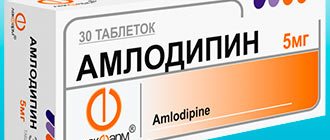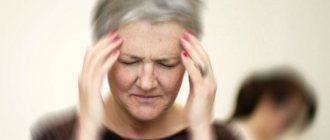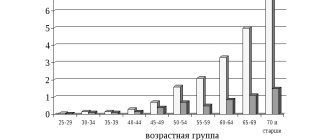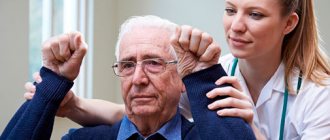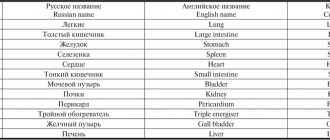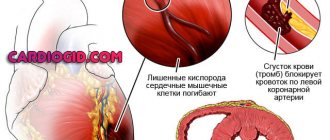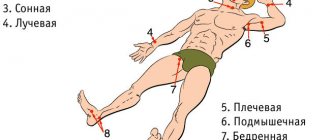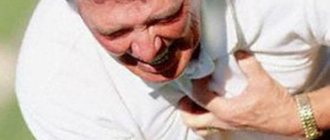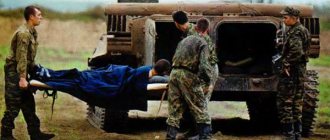Precursors of stroke in women
Stroke occurs more often in women than in men.
Signs of an impending stroke in women:
- limbs move worse or do not move, weakness in the arm and leg on one side;
- weakness, drowsiness, increasing headache, which leads to nausea, lethargy;
- decreased sensation in a limb or one side of the body;
- impaired speech perception and ability to speak;
- loss of balance, ability to navigate in space.
Brain stem
With ischemia, life- and health-threatening manifestations develop. Like stopping breathing, cardiac activity. This is the only case when a pre-stroke in a woman can lead to death even without the death of cerebral tissue.
Additionally, it is possible to develop elevated body temperature. Thermoregulation is disrupted, the readings fluctuate, from 35 to 38 degrees Celsius or more.
The sign is also considered threatening and requires urgent correction in a hospital setting. The patient is constantly monitored for timely resuscitation.
Signs of a stroke
A stroke is localized in the brain or spinal cord.
It is divided into ischemic and hemorrhagic. In an ischemic stroke, part of the brain tissue dies due to circulatory failure. The hemorrhagic type occurs when the vessel wall is damaged and blood flows into the brain tissue. It occurs suddenly, more often during the day. It is preceded by a hypertensive crisis.
The first signs of a stroke in women:
- gradually increasing headache;
- weakness;
- speech disorder;
- vomit;
- loss of consciousness, coma;
- pupils of different sizes;
- frequent noisy breathing;
- weakness in the limbs on one side, paralysis in the arm or leg on one side (hemiparesis);
- speech disorder.
The stroke that occurs in older women (after 50-60 years) is in some way different from the one that develops in women 30-35 years old or 40-50 years old.
Difference between stroke in young and old age:
- The course of the stroke.
- Greater aggressiveness, pathology, and rate of damage to brain tissue in women over 70-80 years of age.
- In the consequences after a stroke in elderly women.
- How favorable the prognosis after a stroke can be for women over 60-80 years of age.
- Signs of stroke in young women.
What is a stroke
The essence of a stroke is the cessation of blood supply and functioning of a part of the brain as a result of damage to a vessel.
The larger the affected area, the more severe the stroke. Necrosis of a portion of the brain substance is called an infarction [3]. There is a high risk of death in the first few hours, and then in the period up to 28 days after a vascular accident. The annual mortality rate from stroke in the Russian Federation is 374 cases per 100,000 [10]. In 2018, 35% of patients died in the acute period of stroke; by the end of the first year, this figure increases by 15%, and in general, in the first 5 years, the mortality rate of strokes is 44% [11]. The mortality rate from stroke was 92.9 per 100,000 population, and the hospital mortality rate was 19.1% [5].
Long-term disability is most likely for patients who have suffered a stroke. The prevalence of primary disability due to stroke in 2018 was 3.2 per 10 thousand population [2]. Of these, 31% need constant care, 20% have severe mobility limitations, and only 8% return to work [3]. The prevalence of recurrent strokes in 2014 was 0.79%, of which ischemic
strokes account for 87.5% [9].
First aid for stroke
It is impossible to determine the nature of a stroke in the first hours, therefore it is necessary to normalize vital functions (breathing, blood circulation) and ensure the prevention of possible complications (pneumonia, thromboembolism, bedsores).
The first step is to call an ambulance. It is advisable to reassure the patient and measure blood pressure. If there is vomiting, place the patient on his side and place his hand under his head. Do not bend your neck, because blood flow cannot be impaired. The airways need to be clear. In case of severe respiratory distress, mechanical ventilation must be started.
If breathing is impaired, it is necessary to free the patient from tight clothing. Free the oral cavity from foreign objects, mucus, and vomit. If the patient is indoors, access to fresh air is necessary. If a person is conscious, it is advisable to cheer him up and calm him down.
If you lose consciousness, you need to make sure that the person is not injured or bruised.
There is no need to take medications so as not to worsen the patient’s condition.
If it is not possible to call an ambulance, then you must transport the victim to the hospital yourself.
Comprehensive stroke treatment
First of all, doctors need to stop the hemorrhage, relieve swelling, and carry out prophylaxis immediately after the patient’s admission to the hospital, which will prevent a recurrence of the attack. Next, the patient will receive symptomatic treatment based on the individual clinical picture.
Typically, the therapeutic regimen is developed in an interdisciplinary meeting. The commission includes a therapist, cardiologist, pharmacologist and some other specialized specialists. This helps minimize the risk of complications or adverse reactions from the use of certain medications.
The body’s functionality is supported through the following procedures:
- IVL (artificial pulmonary ventilation);
- cleaning the oral cavity from vomit and mucus;
- breathing exercises;
- maintaining blood pressure at the required level;
- droppers that help thin the blood and restore salt balance;
- treatment with anticoagulants;
- if swallowing ability is lost, feeding through a tube.
The success of therapy will depend on the quality of medical care provided and the condition of the patient’s body. Rehabilitation will also play a major role, but it begins only after the 3rd week of continuous treatment of an attack.
The relationship between brain regions and the clinical picture of stroke
If the right lobe is affected, this is expressed by paralysis of the left limbs or loss of sensitivity in them.
The patient has a pronounced depressive state and a decrease in the desire for recovery. If the hippocampus area is affected, then the patient cannot grasp objects with his hand, loses the ability to navigate in space, cannot remember what happened yesterday, but memories of a longer period are preserved.
The hippocampus is responsible for emotions, short-term and long-term, spatial memory necessary for orientation in space.
If the left lobe is affected, then paralysis, decreased or loss of sensitivity in the right half of the body is characteristic, the patient does not perceive speech and speaks inarticulately.
If the cerebellum is affected, there is a lack of coordination, the patient feels nausea and dizziness. When the stem structures are damaged, the patient may experience double vision, the act of swallowing is disrupted, and involuntary movements occur.
How to recognize a stroke
You can determine the development of a stroke by doing the following:
- Try to quickly repeat the phrase.
- Smile widely (if a stroke develops, the immobility of part of the face will be noticeable).
- Raise your arms up (if cerebral circulation is impaired, this will not be possible).
- Ask the person to show their tongue (in the case of a stroke, its tip will be deviated towards the brain lesion).
If the patient cannot pass this test, you must immediately call an ambulance, and during this time provide first aid:
- Lay the patient down, raising his head above body level.
- Provide air flow (open a window, balcony).
- Free yourself from tight clothing (unfasten your bra, belt, belt, tie, etc.).
- When vomiting, turn your head to the side.
- Measure blood pressure, pulse, record all readings.
When signs of a stroke appear, it is important to behave calmly and reassure the person, since excessive emotionality contributes to increased blood pressure.
Hemorrhagic stroke: harbingers of vascular integrity violation
If a disturbance in the blood supply to the brain is caused not by a blockage, but by a rupture of an arterial vessel, they speak of a hemorrhagic stroke, which has an excellent clinical picture. Hemorrhagic stroke: symptoms in women:
- partial paresthesia of the facial muscles;
- paresis of the limbs (paralysis of the arms, legs);
- a sharp increase in blood pressure. With general hypotension characteristic of women, an increase to non-critical indicators for most healthy people, for example, 130/95, is sufficient. Externally, an increase in blood pressure is manifested by a sharp rush of blood to the scalp and redness of the face. The patient may complain that everything around her “sees red”;
- shortness of breath, deep, noisy breathing;
- decreased heart rate;
- vestibular disorders;
- speech dysfunction;
- photophobia;
- involuntary rotation, “turning” of the foot of one leg outward.
Care for elderly patients
Proper care of an elderly patient plays a very important role in the general treatment plan for stroke. This will help not only reduce the number of medications prescribed, but also avoid many complications due to unwanted drug interactions.
If the swallowing function is preserved and the patient is conscious, then she is fed in the usual way. Nutrition should include all the necessary proteins, carbohydrates, amino acids, fiber and vitamins. Fats are strictly limited. In case of stroke, fractional nutrition in small portions is indicated. The patient should spend at least half an hour in a sitting position after eating. Often caregivers or nurses help feed her. If the function is impaired even slightly, the patient will be fed through a special tube.
Main causes of strokes
An immediate danger to cerebral circulation is posed by spasms, disruption of the integrity of vessel walls, and occlusion processes provoked by blood clots or cholesterol deposits. Most people have several main risk factors for developing pathology:
- physical inactivity: lack of physical activity causes systemic damage to the body;
- endocrine diseases: often lead to increased platelet production and excessive blood thickening;
- obesity: a platform for the development of many cardiovascular and metabolic disorders;
- chronic hypertension: due to increased load, blood vessels quickly wear out and become fragile;
- atherosclerosis: the lumen of the arteries gradually decreases due to plaque deposits in them;
- genetic predisposition: some people inherit a weak vascular system.
In young people, stroke is usually caused by congenital lesions of the cerebral vessels, consequences of traumatic injuries, and some systemic diseases, including severe hypertension.
In women during menopause, the risk of stroke increases due to age-related hormonal changes. Their bodies produce less estrogen, which protects blood vessels from damage. As a result, heart problems develop faster, weight increases, thyroid disorders occur more often, and cholesterol levels rise. One of the characteristic signs of menopause is an increase in the level of platelets in the blood. Combined with other changes and in the absence of a healthy lifestyle, the risk of stroke becomes more real.
Alcohol and tobacco smoking also systematically lead to vascular disorders: they destroy their structure, increase permeability, reduce tone and elasticity. These habits are dangerous for men and women of any age.
Symptoms depending on the area of brain damage
In medical practice, there are three main types of cerebrovascular accidents. These include ischemic stroke, subarachnoid and intracerebral hemorrhage.
Main symptoms of stroke
Damage to the subarachnoid space
The subarachnoid space is also called the subarachnoid space. This is the area located between the subarachnoid and pia mater of the brain.
Hemorrhage in this area entails extremely dangerous events for health:
- acute pain in the head;
- fog;
- nausea accompanied by vomiting;
- development of emotional disorders - fear, increased excitability, drowsiness;
- coma or stunning;
- photophobia, strabismus, convulsions;
- increased body temperature;
- loss of skin sensitivity;
- difficulty speaking.
This type of stroke develops as a result of brain injuries, due to rupture of aneurysms and arteriovenous malformations. Risk factors include bad habits, poor diet, arterial hypertension, and vascular damage from infectious diseases.
Symptoms of intracerebral hemorrhage
Symptoms of a hemorrhagic cerebral stroke are characterized by a bright course. This type of hemorrhage is characterized by a high percentage of mortality and disability. All signs can be divided into focal and cerebral.
General cerebral signs:
- severe pain in the head, sometimes even provoking a cry;
- nausea, severe vomiting;
- the face and limbs become purple;
- dizziness;
- the appearance of seizures;
- sharp depression of consciousness, precoma or coma.
Paralysis of certain areas of the brain entails inhibition of the function of blood supply and respiration, which in most cases causes death.
Hemorrhagic stroke is the most dangerous, most often leading to death
Focal symptoms depend on the location of the area where the vessel ruptured and a hematoma formed. Such manifestations include:
- numbness on one side of the body opposite the affected area;
- decreased vision;
- hearing impairment;
- fecal and urinary incontinence;
- mental disorders (decreased intelligence, delirium, inappropriate behavior);
- negative reaction of the patient to light and sound stimuli.
Signs of a stroke in a person may be characterized by an epileptic seizure. The patient falls, convulses, screams, foam comes out of the mouth. Another important symptom is that the victim’s gaze is directed in the direction in which part of the brain the hemorrhage occurred. On the same side, dilation of one of the pupils is observed. The corner of the mouth and cheek move down. More often, these manifestations indicate a hemorrhagic stroke of the subcortical space.
Manifestations of ischemic stroke
Ischemic stroke is a condition in which there is some kind of obstruction in the blood vessels to transport blood to the brain area. Most often, this type of disease occurs against the background of atherosclerotic vascular lesions.
Signs of an impending stroke may include the following:
- headache;
- disturbance of consciousness and speech;
- decreased physical activity;
- vomiting, nausea.
Later, people with ischemic stroke may experience symptoms such as sudden numbness of the extremities of the right or left side of the body and face, misunderstanding of the speech of others, the patient’s words are incoherent, fear develops, and actions become unconscious. If you ask a person to raise two arms, one of them will remain motionless due to paralysis. The same situation arises when asking the victim to smile. During a stroke, the corner of the mouth on one side will droop.
Ischemic stroke occurs due to the formation of a blood clot and blockage of a vessel
Important! Sometimes, during the development of an attack, the patient’s speech remains coherent, which greatly complicates the diagnosis of the condition and often leads to the development of severe consequences.
How to determine the onset of a stroke
It is impossible to distinguish a transient ischemic attack from an irreversible acute circulatory disorder without medical assistance. Both situations require hospitalization. Serious attacks can be identified using a simple test:
- The patient needs to symmetrically extend both arms forward, then alternately touch his nose with each palm. The inability to do this, sudden disturbances in the trajectory of movements, and a distorted body are signs of an attack.
- When looking in the mirror or at your interlocutor, you should smile broadly, stick out your tongue far, and say a few words. A possible stroke is indicated by distorted or paralyzed corners of the mouth, deviation of the tongue to the side, and slurred speech.
- You must try to write on paper or type any text on the keyboard. During a stroke, this is very difficult to do; the result is a meaningless set of letters.
One or more alarming symptoms is a reason to urgently call for medical help or go to the hospital. The first 3 hours after a stroke are most important for restoring blood circulation and preventing irreversible brain damage. A doctor is also necessary in cases where health has recovered on its own.

